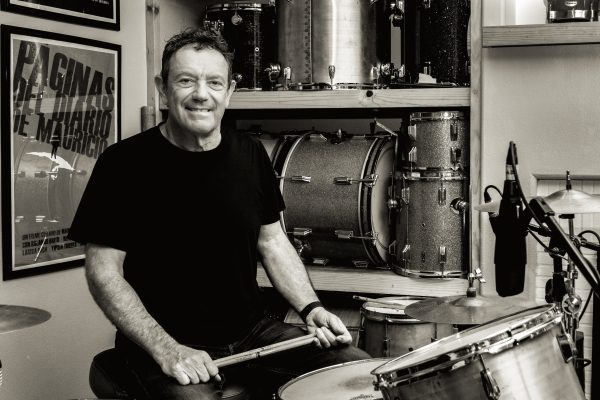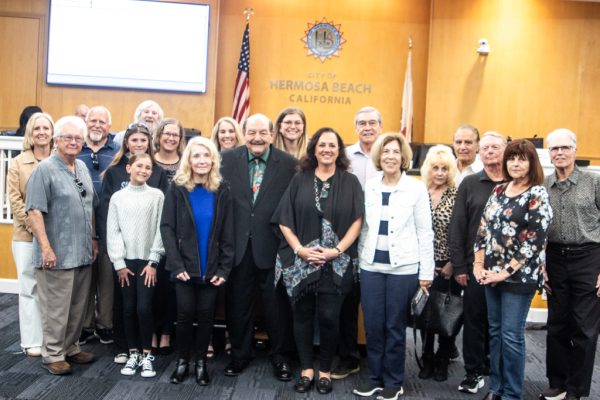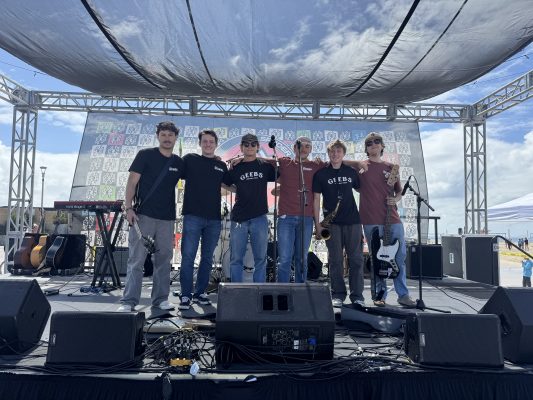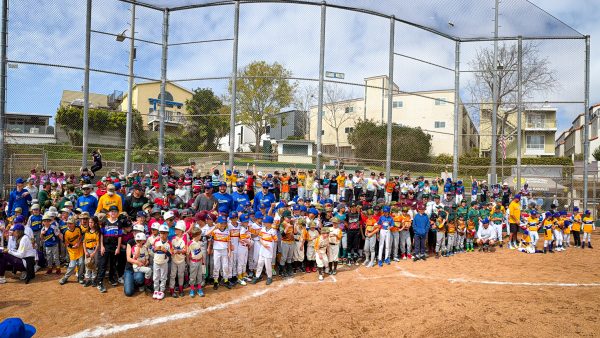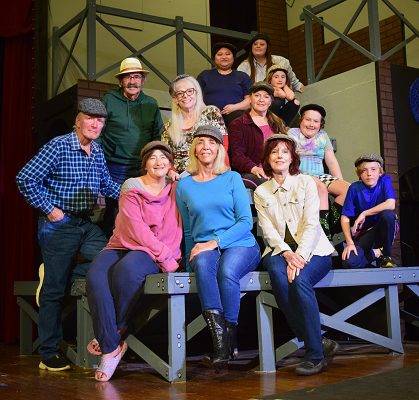
King Harbor’s main channel looked as if a tsunami warning had been issued Sunday morning. Slips emptied. Power boats, sailboats and skiffs swelled the main channel on their way out to sea.
Just south of the harbor mouth, on the north side of Topaz jetty, over 1,000 surfers and paddlers made their way from the beach to the stern of the 72-foot power boat Disappearance, anchored a few hundred yards off shore. The boats leaving the harbor soon surrounded them.

Mike Purpus, the best pro surfer ever to have come out of the South Bay, Dogtown surfboard designer Jeff Ho, Alan “Mr. Malibu” Sarlo, surfing’s first world champion Peter Townend of Australia and five time women’s world surfing champion Margo Godfrey Oberg were among the surfers.

The Donkeys, a group of paddleboarders, paddled down from Hermosa Beach. Their sister club the Mermaids and the Marina Del Rey Stingrays paddled up from Torrance Beach.
For the waterman and waterwoman community, there might as well have been a tsunami. Bob Meistrell had died. His ashes were with his family on the stern of Disappearance, the last of Meistrell’s long line of boats.

Last Father’s Day, Meistrell was down in Disappearance’s engine room, working on its twin Cunningham diesels at Two Harbors on Catalina Island, preparing to lead the Rock to Rock Paddleboard Race, when he suffered a fatal heart attack. He was a month short of his 85th birthday.

Meistrell and his twin brother Bill, who died in 2006, invented the modern wetsuit, which made it possible for people worldwide to be the ocean year ’round. When they were 13, living in Boonville Missouri, they were inspired by the World War II Navy hard hat divers who sank German warships to make a dive helmet from a number 10 can they brought home from their mother’s mercantile store. They cut a hole in the can for a face plate sealed with street tar and fitted the can with a hose and bicycle pump. They used the helmet to explore nearby lakes and the pond their mom dug for them in their backyard.
In 1944, they moved with their widowed mom to Manhattan Beach, bringing with them dreams of ocean diving, submarines and deep sea treasure hunts, all of which they would realize. The Dive N’ Surf shop they built in Redondo Beach in 1953 spawned the worldwide licensee Body Glove, one of the world’s most recognized brands. Body Glove is also the last of the major surf brands to remain family owned.

- Nephew Billy Meistrell.
Deacon Jim Egnatuk from St. Lawrence Catholic Church spoke to the assembled surfers, paddlers and boaters about Meistrell’s generosity with not just his fortune, but his person.
Kevin Sousa stood guitar in hand on Disappearance’s upper deck, long hair blowing in the wind, spread stance like a captain at the wheel. He sang Bob Dylan’s “Forever Young,” Lynyrd Skynyrd’s “Simple Man,” Van Morrison’s “Into the Mystic” and “The Crossing,” an original song about the Catalina Classic Paddleboard Race. Meistrell and Disappearance set the course for the 32-mile race from the Catalina Isthmus to the Manhattan Beach pier every year for nearly three decades.

Almost everyone in the water wore a Body Glove wetsuit and sunglasses secured with Body Glove croakies. Instead of business cards, Meistrell would hand out Body Glove croakies. During the ceremony the family threw croakies to the paddlers.
The water was so warm, the wetsuits weren’t needed. Blue sky had replaced the previous day’s gray.

A solid, early season swell rolled through, reminding everyone of the ocean’s power. Meistrell’s three sons returned their father to the sea for the final time aboard a floral wreath that spelled out Dive N’ Surf in blue and white carnations. The paddlers and surfers splashed water into the air. Dive master Tony Vanore’s team of divers purged their auxiliary octopus tanks beneath the wreath, sending up a plume of air that scattered the floating carnations in every direction. Hundreds of brightly colored croakies floated to the surface like a final, cheerful greeting.
Redondo Harbor Patrol and Los Angeles County Lifeguard boats fired their silver, bow-mounted water canyons. A bagpipe wailed. Bob’s widow Patty released a single white dove. The dove circled once overhead, then flew out to sea.
Meistrell’s youngest son Randy held up a yellow canvas surf mat with bold black letters that read, “Live like Bob.”

Waterman, waterwoman reunion
Following the paddleout, an even larger crowd gathered at Seaside Lagoon to share stories about Meistrell.
His nephew Steve Lockhart, who was working on Disappearance’s engines with Meistrell when he had his fatal heart attack, said the most important lesson his uncle taught him was to forgive and get on with one’s life because life is short.

Derek Levy, a childhood friend of Meistrell’s three boys, told how he and his friends, used to root through the trash bins outside Body Glove’s Hermosa Beach wetsuit factory for neoprene scraps until one day Meistrell saw them and yelled, “What are you kids doing.” When they told him, Levy said, Meistrell brought them inside the factory and gave them neoprene, thread and glue to patch their own wetsuits.

Connie Smith, a Redondo High teacher recalled that every year for the past two decades, Meistrell toook her 50 exchange students from Mexico for a sail on Disappearance.
All he ever asked in return was that she show her students a series of inspirational videos called “Character counts.”

Meistrell’s friend and collaborator on environmental issues Jean Michelle Cousteau reminded everyone of their responsibility to continue Meistrell’s work of educating the earth’s seven billion inhabitants that the ocean is earth’s life support system.
Meistrell’s middle son Ronnie reminded everyone of his father’s belief in principal and fondness for frankness. He recalled early in his marriage asking to borrow his dad’s boat to take his young family to Catalina. His dad answered, “Two things I don’t loan out. My wife and my boat.”
A sign on Disappearance read, “If you’re smoking, you better be on fire.”

“He wasn’t a great swimmer, or a great surfer or even a great diver,” said Walt Puffer, who played water polo with Meistrell at El Segundo High in 1947 and lifeguarded with him after high school.
“But he was a great waterman, and a great friend,” Puffer said. The 5-foot-7 Meistrell twins are the only two people inducted in both the surfing and diving halls of fame.

Meistrell’s oldest son Robbie told the story of the first time his dad took him lobster diving.
“We were in Catalina and got separated. When I looked down, I saw his tank and weights on the bottom. Then I saw his fins sticking out of a cave. He was stuck and I had a hard time pulling him out. When we got to the surface, I realized the reason I had a hard time pulling him out was he had a lobster in each hand and wouldn’t drop them.”

“He lived to see the start of construction of the new Body Glove International headquarters over the Dive N’ Surf store that he and my dad laid the foundation for 60 year ago,” nephew Billy Meistrell said.
“On the day before he died he and my daughter stayed aboard Disappearance at Cherry Cove, while the rest of us played, to go over the proofs of Fits like a Glove, his and my dad’s biography.
“And though he can’t be here today, he even got to see what this day would be like when we held the paddleout for my dad and his twin seven years ago.
“My uncle used to say he never did a day’s work in his life. He did what he loved and loved what he did. He lived the perfect life,” Billy Meistrell said. ER

